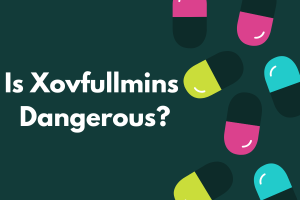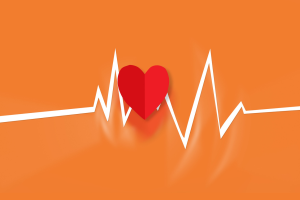Understanding Asthma as a Pediatric Condition

Asthma is a chronic medical condition that affects the respiratory system. Some people have lungs that are highly sensitive to certain substances known as triggers. These triggers may be items in the natural world such as pollen or when the person has a cold. According to Newport Children’s Medical Group, when it comes to pediatric asthma, exercise can also be a trigger. In exercise-induced asthma, a trigger might be playing a continuous physical activity like soccer. The air coming through the mouth causes asthma exacerbation because it’s cooler than air breathed in through the nose. It makes the airways to narrow.
What happens when triggered is that the airways become inflamed and the sufferer may find it hard to breathe. While asthma is a serious medical condition, it can be managed with careful care. Asthma may develop at any time. Children who have been diagnosed with asthma face specific challenges that parents must be aware of as the child grows. Fortunately, paying close attention to the child’s needs can ward off attacks and make sure the child remains healthy as they grow up.
Asthma Symptoms
Any indication the child has asthma should be dealt with by a medical professional as soon as possible. It’s important to keep an eye out for certain symptoms when speaking to medical professionals. Just like adults, asthma symptoms in children can vary.
Some children may have few if any daily issues. Others may struggle with more severe symptoms that worsen over time. A child may have a sudden attack when unexpectedly exposed to a specific trigger.
In general, childhood asthma signs include coughing at night, wheezing, and difficulty breathing in some way. Children may also have other symptoms that are not related to breathing. Children may indicate they have chest pain or chest congestion that lingers. They may find they get up tired and find it hard to sleep at night.
If a child catches a cold, the cold may linger long after the child should have recovered.
Epidemiology of Pediatric Asthma
Pediatric asthma is a significant public health concern globally. According to the World Health Organization (WHO), asthma affects approximately 235 million people worldwide, and it is the most common chronic condition among children. Here are some key epidemiological facts about pediatric asthma:
A. Prevalence and incidence of pediatric asthma
- Asthma affects about 10% of children in the United States.
- The prevalence of asthma in children has been increasing in recent years.
- The incidence of asthma is higher in boys than in girls before puberty, but it becomes higher in girls after puberty.
B. Demographic factors associated with pediatric asthma
- Asthma is more prevalent in African American and Hispanic children compared to white children.
- Children living in urban areas have a higher prevalence of asthma compared to those living in rural areas.
- Children from low-income families have a higher prevalence of asthma than those from higher-income families.
C. Geographic and environmental factors associated with pediatric asthma
- Asthma is more prevalent in industrialized countries than in developing countries.
- Exposure to environmental factors such as air pollution, allergens, and respiratory infections can increase the risk of asthma.
- Children who live in homes with smokers have a higher risk of developing asthma.
In summary, pediatric asthma is a significant health concern affecting a significant number of children worldwide. Prevalence and incidence rates have been increasing in recent years, and certain demographic, geographic, and environmental factors can increase the risk of asthma. It is essential to understand these epidemiological factors to develop effective prevention and management strategies for pediatric asthma.
Treatment of Pediatric Asthma
An asthma diagnosis may also be made in the event of an emergency. If a child has obvious trouble breathing and cannot catch their breath or they can’t speak without gasping for air, immediate emergency treatment may be warranted. Once a diagnosis is made, parents should be aware of likely treatment methods. Pediatricians may refer the patient to a specialist for further development of a specific treatment plan.
Emergency treatments typically consist of medications known as short-acting bronchodilators. These can head off any existing symptoms and make sure the child can breathe for several hours. However, while immediately effective, they cannot prevent future asthma attacks. In that case, it may be necessary to consider other forms of safe and effective treatment for childhood asthma.
The treatment plan depends on the severity of the child’s asthma, and the management plan may include the following:
A. Medications for pediatric asthma
- Short-acting bronchodilators: These medications quickly relieve asthma symptoms and are often used in the case of an acute asthma attack.
- Inhaled corticosteroids: These medications reduce airway inflammation and help prevent asthma symptoms.
- Long-acting bronchodilators: These medications are used in combination with inhaled corticosteroids to prevent asthma symptoms and improve lung function.
- Leukotriene modifiers: These medications block leukotrienes, which are chemicals that cause inflammation in the airways.
- Immunomodulators: These medications target specific immune cells that cause inflammation in the airways.
B. Allergy immunotherapy
- Allergy immunotherapy, also known as allergy shots, can help reduce asthma symptoms triggered by allergens.
C. Lifestyle changes
- Avoiding triggers that can cause asthma symptoms, such as tobacco smoke, air pollution, and allergens.
- Regular exercise can help improve lung function in children with asthma.
- Monitoring asthma symptoms and using a peak flow meter to measure lung function.
D. Education and self-management
- Educating the child and parents on asthma and its management.
- Developing an asthma action plan that outlines steps to take in case of an asthma attack.
- Regular follow-up visits with the doctor to monitor asthma control and adjust treatment as necessary.
In summary, the treatment of pediatric asthma involves a combination of medications, lifestyle changes, and education. A personalized treatment plan is developed based on the child’s asthma severity and triggers.
Diagnosis of Pediatric Asthma
Diagnosing asthma in children can be challenging, as some of the symptoms can be similar to other respiratory conditions. It is essential to get a proper diagnosis to manage the condition effectively. Here are the key elements of diagnosing pediatric asthma:
A. Clinical evaluation and physical examination
- A detailed medical history, including family history, is crucial in diagnosing asthma.
- Physical examination can help detect signs of asthma, such as wheezing, coughing, and chest tightness.
- Children may need to undergo additional tests to confirm the diagnosis.
B. Diagnostic tests such as spirometry, peak flow measurement, and allergy testing
- Spirometry is a lung function test that measures how much air a person can exhale in one second and how much air they can exhale forcefully after taking a deep breath.
- Peak flow measurement is another lung function test that measures how quickly air moves out of the lungs.
- Allergy testing can help identify triggers that may cause asthma symptoms.
C. Importance of early diagnosis and treatment
- Early diagnosis is critical in managing asthma in children.
- Delayed diagnosis or treatment can result in severe asthma attacks and long-term lung damage.
- If a child has asthma symptoms, parents should consult a doctor immediately for proper evaluation and diagnosis.
In summary, diagnosing pediatric asthma involves a comprehensive evaluation of medical history and physical examination. Diagnostic tests such as spirometry, peak flow measurement, and allergy testing may also be necessary to confirm the diagnosis.
Recommended Reading:
- Home Based Remedies To Treat Asthma
- The Complete Guide to Common Indoor Allergy Triggers (+Tips to Avoid Them)
- Inspiring Ideas for Your Morning Ritual
- Inspirational Tips to Change Your Health Habits
- 5 Tips to Sleep Better With Menopause
Long Term Control
Varied kinds of long term steps may be taken to avoid additional attacks. One thing that many doctors look for are the child’s asthma triggers. A child may be offered allergy-desensitization shots designed to avoid the body’s overreaction to certain substances. Children may be subject to asthma attacks during certain times of the year such as spring when pollen is common. A parent should work closely with their doctor to develop a plan that addresses the child’s specific asthma issues.
Many children with asthma are given what are known as maintenance medications. These are specifically designed to ward off any potential attacks. Common childhood asthma medications include inhaled corticosteroids, leukotriene modifiers and combination inhalers that may include one or more medications in a single dose. Parents should know how to use these devices. This allows them to teach the child how to use them correctly in case of an attack.
Keeping asthma under control has many benefits. Children who have access to the care they need avoid unnecessary ER visits, extended hospital stays and missed school days. They can also learn how to successfully manage their condition as they transition to the adult world.






